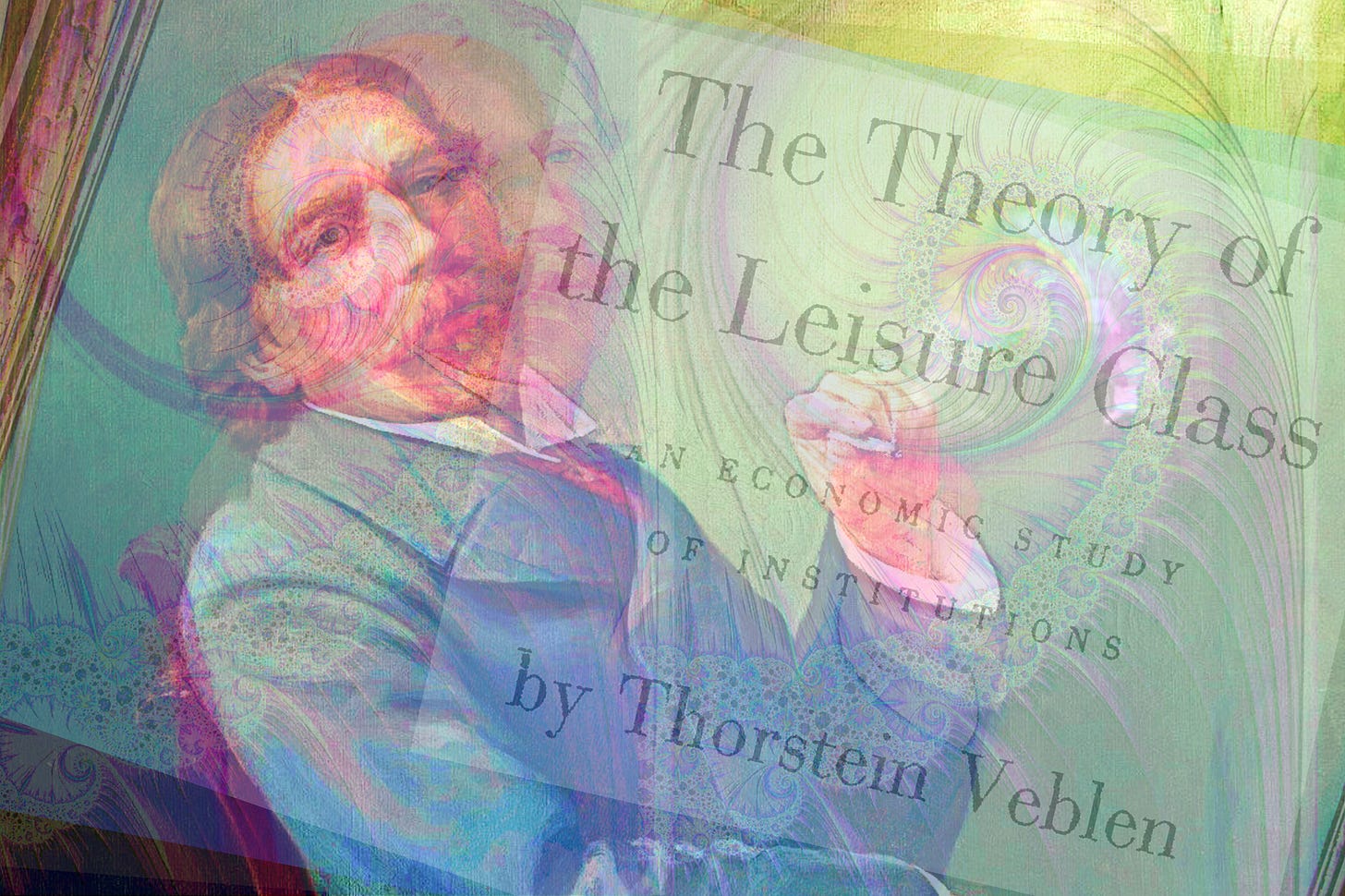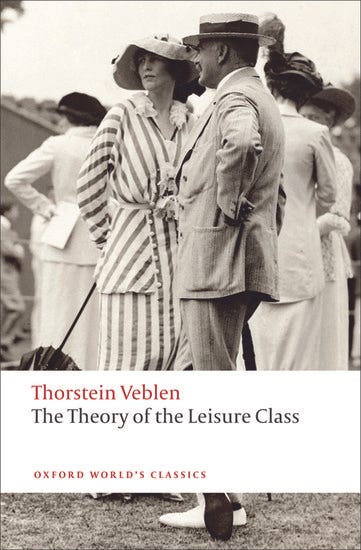Veblen on the Drug Habits of the Elite
Economist Thorstein Veblen's 1899 text remains as relevant as ever, well over a century later
[Continued from "...with powder and with pills."]
One of the most poignant analyses of how rich people get fucked up can be found in The Theory of the Leisure Class: An Economic Study of Institutions (1899) by Thorstein Veblen. Veblen, an economist trained at Johns Hopkins and Yale, didn’t hold back in this biting text, which examines the lifestyles of the rich and the famous through a critical, anticapitalist lens. Dripping with laconic wit, Veblen’s book describes the drug culture of the elite with incisive clarity.
In a chapter on conspicuous consumption, he specifically addresses the use of “stimulants,” “narcotics,” and “intoxicating beverages,” all of which he lumps together. Among the wealthy, he notes, the conspicuous (ie public) consumption of expensive drinks and drugs is seen as “noble and honorific.” Being openly intoxicated can function as “a mark…of the superior status of those who are able to afford the indulgence.”1
But it is not enough to merely get sloshed (or lit, or what have you). In order to demonstrate their social position—indeed, to prove it—the wealthy are expected to become connoisseurs of costly intoxicants. And they must not only get fucked up; they must get fucked up in the right manner as befitting their class status and peer group. Veblen discussed how different habits and/or substances become affiliated with specific classes or subpopulations due to an interplay of social and economic forces.2
Veblen saw a variety of factors at play in determining social norms around drug use and class status. He considered not only whether an individual can afford a particular substance; additionally, he points out that one must have the time to consume it. There is also the issue of whether one has the means to consume it again, and if so, how often. Then there is the decision as to whether one consumes said substance conspicuously (in public view) or inconspicuously (in private). All of these factors combine in unique ways to delineate social norms and class status and are revealed, Veblen argued, through individual consumption habits. Different combinations of decisions emerge into something resembling standard protocol among peer groups, often without explicit discussion, as a matter of due course.
These passages from Veblen offer, still to this day, some of the most compelling analysis of how class status affects taste in commodities, and drugs specifically. That its accuracy has held up well over a century later is all the more noteworthy. Veblen deserves credit as an early pioneer in the study of how economic forces influence drug consumption.
Five years after Veblen’s Theory, another piece was published that added some more depth to popular understandings of class and taste. The German sociologist Georg Simmel, a pioneer in his own right, offered a detailed exploration of the social forces that shape fashion trends and consumer habits more broadly.
In his landmark text, Fashion (1904), Simmel elaborated on how the taste and habits of the elite shift over time, typically in a sort of reaction against the adoption of behaviors typically associated with the upper class among the working class. Simmel wrote that “the fashions of the upper stratum of society are never identical with those of the lower; in fact, they are abandoned by the former as soon as the latter prepares to appropriate them.” Simmel’s observation can be loosely applied to drug culture to expand upon the points made by Veblen.
To be continued…
See Thorstein Veblen, The Theory of the Leisure Class, p. 74
Ibid., p. 89-91








This is great stuff Vincent!
This is just an extraordinary insight into Homo economics and how he browses the pharmacy.